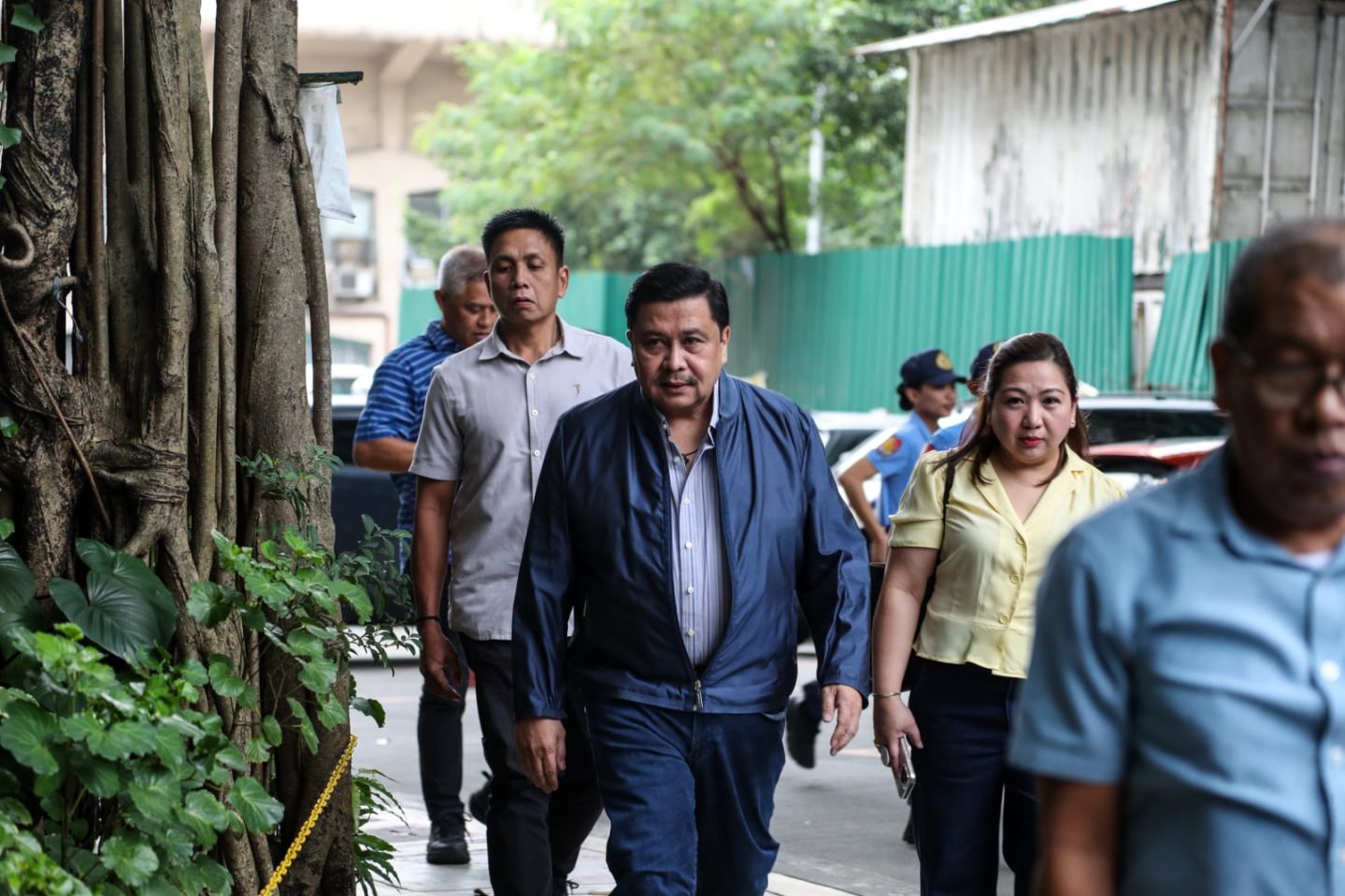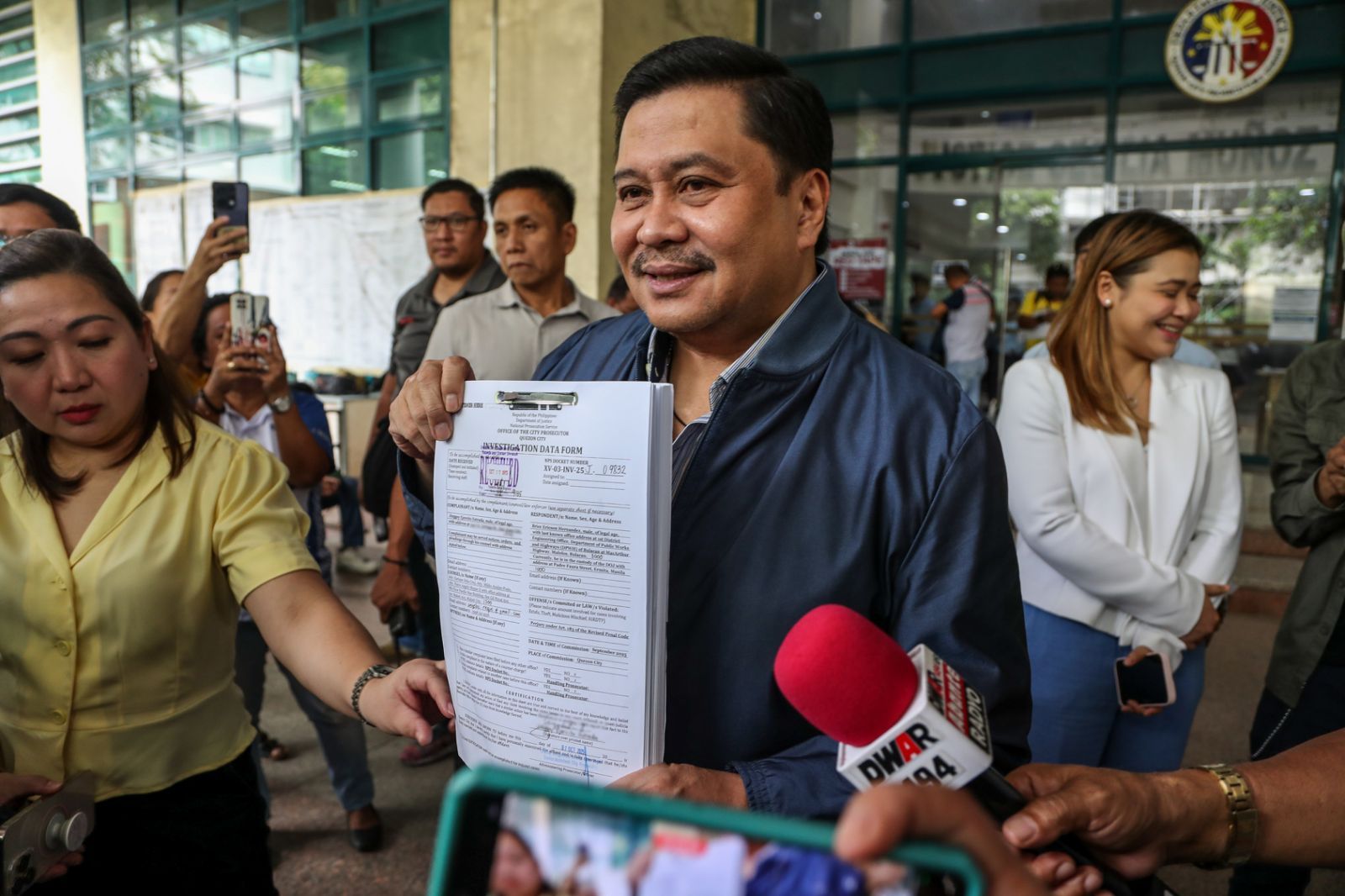SHOCKING POLITICAL SCANDAL! Senator Jinggoy Estrada Files Complaint Against Former DPWH Engineer Brice Hernandez Over Bulacan Flood Control Projects – Allegations of “30% Commitment” Spark National Outrage
In a move that has sent shockwaves through the Philippine political landscape, Senator Jinggoy Estrada officially filed a complaint against former Department of Public Works and Highways (DPWH) engineer Brice Hernandez at the Quezon City Prosecutor’s Office on the morning of Tuesday, October 7. The complaint, which has already become a trending topic on social media and major news outlets, centers around explosive allegations regarding purported “30% commitments” linked to flood control projects in Bulacan, a province long prone to devastating floods and water-related calamities.

This filing represents not only a personal legal battle but also a wider confrontation over transparency, accountability, and corruption within the government’s infrastructure projects. For decades, Bulacan has been plagued by flooding, displacing thousands of residents, disrupting lives, and triggering economic losses. Against this backdrop, any hint of irregularities in flood mitigation initiatives is naturally subject to intense scrutiny, public outrage, and political debate.
The Core of the Allegations: “30% Commitment”
According to the records provided in Estrada’s complaint, Hernandez allegedly accused Senator Estrada of receiving “commitments” amounting to 30% of project costs from select flood control undertakings in Bulacan. While Hernandez’s claims have yet to be independently verified by an official audit or government inquiry, the allegations are serious enough to trigger investigations by the Office of the Ombudsman and the Department of Justice.
The term “30% commitment,” in this context, implies a systematic siphoning or diversion of project funds, ostensibly to political figures or intermediaries, rather than being fully allocated to public infrastructure and flood mitigation measures. If proven, such accusations not only constitute grave breaches of public trust but also suggest deeper structural vulnerabilities in the oversight mechanisms of the DPWH and related agencies.
Estrada, a seasoned politician with decades of experience in the Senate and national governance, has categorically denied the allegations. In public statements, he stressed that the complaint filed is a defensive measure, asserting that Hernandez’s accusations are both false and malicious, designed to damage his reputation. Estrada’s legal team emphasized that the senator has always adhered to proper ethical standards, and that these claims are unfounded and politically motivated.
Immediate Public Reaction: Outrage and Confusion
The news of Estrada’s filing against Hernandez ignited immediate reactions across social media platforms. Twitter, Facebook, and Instagram were flooded with comments from concerned citizens, political analysts, and journalists, many of whom expressed shock at the scale of the allegations. Memes, hashtags, and online debates proliferated, highlighting both support for Estrada and deep suspicion regarding corruption in government infrastructure projects.
Filipinos, especially those residing in flood-prone regions like Bulacan, reacted with heightened anxiety. For communities that have long endured the consequences of inefficient or mismanaged flood control systems, any hint that public funds may have been diverted for personal gain provokes understandable outrage. Many netizens questioned how billions of pesos allocated for flood mitigation could be potentially compromised, jeopardizing public safety and infrastructure resilience.
Political Implications: A Test of Accountability
The filing of this complaint also carries substantial political weight. Estrada, as a high-profile senator and former actor-politician with deep roots in Philippine politics, is no stranger to controversy. However, this case strikes at the heart of governance and public accountability, bringing to the forefront questions about the role of politicians in overseeing public projects.
Critics argue that, regardless of the veracity of Hernandez’s claims, the case underscores systemic weaknesses in the DPWH’s project management, auditing, and monitoring processes. Advocates for transparency insist that this scandal presents an opportunity for a rigorous review of internal controls and the creation of safeguards that prevent similar allegations from surfacing in the future.
For political opponents, the situation is both an opportunity and a challenge. On one hand, the allegations provide grounds to question Estrada’s integrity and influence. On the other, premature condemnation without proper judicial process could be perceived as a politically motivated attack, risking backlash from Estrada’s supporters and neutral observers alike.
The Role of the Department of Public Works and Highways

The DPWH, as the agency directly linked to the projects in question, has come under intense scrutiny. Historically, the department has faced criticism for mismanagement, delays, and occasional allegations of corruption, making it a frequent target of political controversy. In response to Estrada’s filing, the department issued a statement promising full cooperation with investigative authorities and reiterating its commitment to transparency and accountability in all infrastructure projects.
Officials emphasized that flood control initiatives in Bulacan are critical for public safety, and that they are subject to rigorous auditing and oversight procedures. However, the public remains skeptical, particularly in light of recurring floods and the perception that corruption and mismanagement have historically impeded effective solutions.
Legal Proceedings: What to Expect
With Estrada’s complaint formally filed, the next steps involve an initial evaluation by the Quezon City Prosecutor’s Office to determine whether the allegations warrant a full investigation or possible criminal charges. Legal experts predict a highly publicized and complex process, given the high-profile nature of the parties involved and the politically sensitive context of the allegations.
Should the case advance, it could involve subpoenas, depositions, and hearings that place Hernandez, Estrada, and other relevant stakeholders under intense scrutiny. In addition, investigative journalists are expected to play a crucial role in uncovering the details behind the alleged “30% commitment” and its potential implications on public projects.
Broader Implications: Public Trust and Governance
Beyond the immediate legal and political ramifications, this case highlights critical concerns regarding governance in the Philippines. Infrastructure projects, particularly those aimed at disaster mitigation, are not just matters of economics—they directly affect the lives, safety, and livelihoods of millions. Any suggestion that funds have been misappropriated, or that political influence interfered with project execution, erodes public trust and diminishes confidence in institutions tasked with safeguarding citizens.
Furthermore, this scandal arrives at a time when the Philippines faces multiple challenges, including climate-related disasters, urban flooding, and economic pressures exacerbated by the COVID-19 pandemic. Mismanagement or corruption in flood control projects can have cascading effects, from displacement of communities to long-term economic losses.
Public Discourse: Social Media and Citizen Engagement
Social media has amplified public engagement on this issue. Hashtags related to the case quickly trended nationwide, as citizens shared opinions, theories, and calls for accountability. Online forums became arenas for debate, with some users defending Estrada as a victim of political maneuvering, while others demanded full transparency and punishment if wrongdoing is confirmed.
Media outlets, both traditional and digital, are covering the story extensively. News reports provide updates on court filings, statements from both Estrada and Hernandez, and expert commentary on the potential legal and political consequences. This heightened coverage not only informs the public but also ensures that the issue remains at the forefront of national discourse.
Historical Context: Corruption in Infrastructure Projects
Philippine infrastructure projects have long been under the microscope for allegations of corruption and mismanagement. From roads and bridges to flood mitigation systems, history is replete with controversies that have sparked public outrage and legal inquiries. This historical backdrop provides context for the current scandal, explaining why allegations like the “30% commitment” are taken extremely seriously and why public skepticism runs high.
Experts note that systemic reforms, including independent audits, transparent procurement processes, and community oversight mechanisms, are essential to prevent the recurrence of such issues. The Estrada-Hernandez case may serve as a catalyst for renewed calls for reform within the DPWH and related government agencies.
Possible Outcomes and Long-Term Effects
The outcome of this case remains uncertain. Should the allegations be substantiated, it could lead to criminal charges, political consequences, and potential restructuring of oversight mechanisms within the DPWH. On the other hand, if the claims are found to be false, Estrada may be vindicated, though the public discourse and political tensions are unlikely to dissipate immediately.
In either scenario, the case is expected to leave a lasting mark on the political landscape, public perception of government accountability, and the broader fight against corruption. It serves as a reminder that governance, transparency, and integrity remain pivotal concerns for Philippine society.
Conclusion: A Nation Watching Closely
As Senator Jinggoy Estrada and former DPWH engineer Brice Hernandez navigate the legal and political complexities of this high-profile complaint, the nation watches closely. Citizens, journalists, and political observers alike await clarity on the truth behind the explosive allegations concerning the Bulacan flood control projects. Whether the claims represent a genuine breach of public trust or a politically motivated smear campaign, the case underscores the ongoing struggle for transparency, accountability, and ethical governance in the Philippines.
The unfolding drama—fueled by allegations of “30% commitments,” legal filings, and national media scrutiny—highlights the delicate balance between political power and public responsibility. It also serves as a call to action for authorities, legislators, and civil society to ensure that public infrastructure serves the people effectively, safely, and transparently.
Above all, this case demonstrates that in the Philippine political arena, no accusation is too small, and no allegation can be ignored. The coming weeks and months will reveal not only the fate of Senator Estrada and Brice Hernandez but also the broader implications for governance, public trust, and the integrity of infrastructure projects nationwide. The nation waits with bated breath, as every development will undoubtedly impact not just politics but the daily lives of millions of Filipinos who depend on effective flood control and transparent governance.





